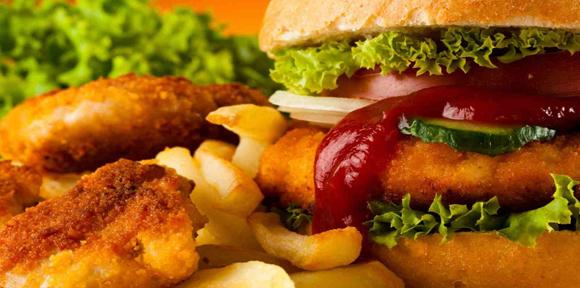
Eating too many calories contributes to people becoming overweight and increases the risks of heart disease, diabetes and many cancers, which are among the leading causes of poor health and premature death.
Several studies have looked at whether putting nutritional labels on food and non-alcoholic drinks might have an impact on their purchasing or consumption, but their findings have been mixed. Now, a team of Cochrane researchers has brought together the results of studies evaluating the effects of nutritional labels on purchasing and consumption in a systematic review.
The team reviewed the evidence to establish whether and by how much nutritional labels on food or non-alcoholic drinks affect the amount of food or drink people choose, buy, eat or drink. They considered studies in which the labels had to include information on the nutritional or calorie content of the food or drink. They excluded those including only logos (e.g. ticks or stars), or interpretative colours (e.g. ‘traffic light’ labelling) to indicate healthier and unhealthier foods. In total, the researchers included evidence from 28 studies, of which 11 assessed the impact of nutritional labelling on purchasing and 17 assessed the impact of labelling on consumption.
The team combined results from three studies where calorie labels were added to menus or put next to food in restaurants, coffee shops and cafeterias. For a typical lunch with an intake of 600 calories, such as a slice of pizza and a soft drink, labelling may reduce the energy content of food purchased by about 8% (48 calories). The authors judged the studies to have potential flaws that could have biased the results.
Combining results from eight studies carried out in artificial or laboratory settings could not show with certainty whether adding labels would have an impact on calories consumed. However, when the studies with potential flaws in their methods were removed, the three remaining studies showed that such labels could reduce calories consumed by about 12% per meal. The team noted that there was still some uncertainty around this effect and that further well conducted studies are needed to establish the size of the effect with more precision.
The Review’s lead author, Professor Theresa Marteau, Director of the Behaviour and Health Research Unit at the University of Cambridge, UK, says: “This evidence suggests that using nutritional labelling could help reduce calorie intake and make a useful impact as part of a wider set of measures aimed at tackling obesity,” She added, “There is no ‘magic bullet’ to solve the obesity problem, so while calorie labelling may help, other measures to reduce calorie intake are also needed.”
Author, Professor Susan Jebb from the University of Oxford commented: “Some outlets are already providing calorie information to help customers make informed choices about what to purchase. This review should provide policymakers with the confidence to introduce measures to encourage or even require calorie labelling on menus and next to food and non-alcoholic drinks in coffee shops, cafeterias and restaurants.”
The researchers were unable to reach firm conclusions about the effect of labelling on calories purchased from grocery stores or vending machines because of the limited evidence available. They also added that future research would also benefit from a more diverse consideration of the possible wider impacts of nutritional labelling including impacts on those producing and selling food, as well as consumers.
Professor Ian Caterson, President of the World Obesity Federation, commented: “Energy labelling has been shown to be effective: people see it and read it and there is a resulting decrease in calories purchased. This is very useful to know – combined with a suite of other interventions, such changes will help slow and eventually turnaround the continuing rise in body weight.”
Reference
Crockett RA, et al. Nutritional labelling for healthier food or non-alcoholic drink purchasing and consumption. Cochrane Database of Systematic Reviews 2018, Issue 2. Art. No.: CD009315.
New evidence published in the Cochrane Library today shows that adding calorie labels to menus and next to food in restaurants, coffee shops and cafeterias, could reduce the calories that people consume, although the quality of evidence is low.

Professor Marteau will be speaking at the 2018 Cambridge Science Festival about why we sometimes make 'unhealthy' choices and how we might encourage people to change.
Friday 16 March: 5:30pm - 6:30pm
Babbage Lecture Theatre, New Museums Site Downing Street, CB2 3RS
Details and how to book here.

The text in this work is licensed under a Creative Commons Attribution 4.0 International License. For image use please see separate credits above.